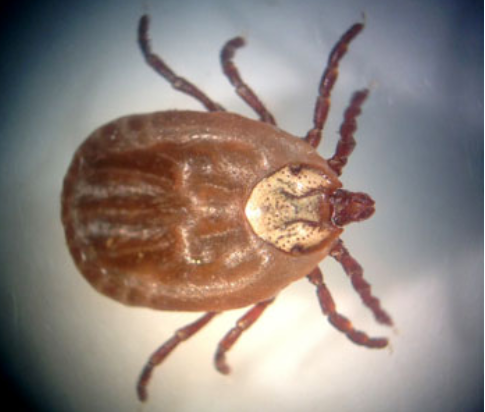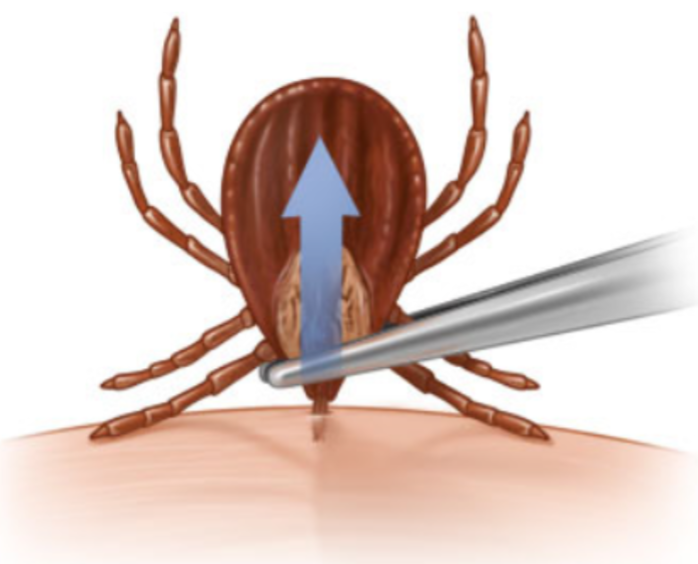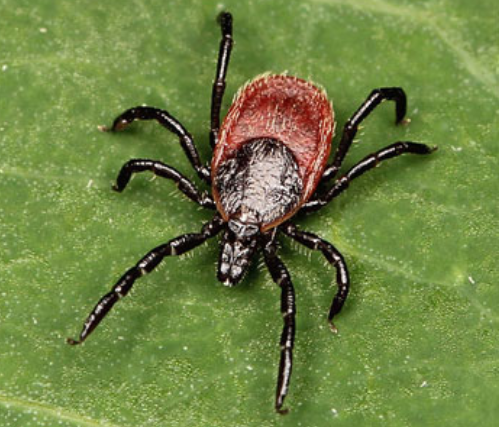With tick season upon the East Kootenay, WildSafeBC is offering information on the pests, how to avoid them, and what to do if you are bitten.
Ticks have eight legs, unlike other insects, and are most active in the spring and early summer.
WildSafeBC said the province is home to two varieties of the insects that are known to bite humans: the Rocky Mountain wood tick and the Western black-legged tick.

The Rocky Mountain wood tick has been known to carry disease, but the occurrence is rare. However, wood tick saliva contains a toxin that can cause paralysis. If the tick is not removed, this can be fatal, but the victim can survive symptom-free if the tick is removed early.
The Western black-legged tick is small, about the size of a sesame seed and is known to carry Lyme disease, which is caused by bacteria. The incidence of Lyme disease is believed to be less than 1%. WildSafeBC said most ticks that carry the disease can be found along the coast.
While the risk of disease from ticks is low, WoldSafeBC recommends a number of precautions to avoid getting bitten:
- Walk on trails and avoid grassy forested areas.
- Ticks do not drop from trees but climb up to the tips of grasses and brush waiting for a host to come by. They are triggered by vibrations and go ‘questing’ for a host.
- Wearing light coloured clothing will help you see ticks
- Tuck your pants into your socks or wear gators. You can apply insect repellent which contains DEET.
- Be especially wary along game trails or good habitat for rodents. This includes open grassy areas.
- When you return from your hike, check yourself, children and pets. Ticks will climb up and they may be in your hairline, scalp, folds of skin, under your armpits or knees.
Areas that are known to have ticks are best avoided if possible if you know where they are around your community.
If you find a tick, remove it as quickly as possible by using fine-tipped tweezers. WildSafeBC said you should try to get as close to your skin as possible and pull straight up, ensuring not to twist.
“Do not handle the tick with bare hands and, if you can, keep the live tick in
your fridge. Monitor yourself for 3 to 30 days afterwards for any symptoms such as muscle joint pain, fever, fatigue or a bulls-eye rash. If you have any of these symptoms seek medical advice and bring the live tick with you for testing,” said WildSafeBC.

Additionally, WildSafe is reminding the public that reducing animal attractants on your property can reduce the chance of encountering ticks at home. The insects cannot travel far on their own, but their host animal can bring the ticks to you.
“Deer and small mammals are great vectors for ticks and if they are in your yard – there is a good chance ticks may be too. Other hosts include, but are not limited to, mice, ground squirrels, marmots, chipmunks, birds, moose, sheep, pets and even birds,” said WildSafeBC. “Best practices include removing or protecting plants that attract deer, removing hiding spots for small rodents, cutting down tall grass, and managing fruits and other attractive sources of food.”
More: How to Avoid and Remove Ticks (B.C. Government)




